With the passage of time, the incorporation of new technologies, and market demands driven by the pace of digital consumption, critical infrastructures are faced with the need to reconsider their business model, renew their assets, and, above all, adopt new agile processes for management, operation, optimization, and automation to meet the demands of their customers in the coming years and remain sustainable over time.
Based on the data that Bjumper has been handling over the past few years, we are starting to consider that a significant portion of infrastructures may encounter certain challenges when it comes to providing support due to the pressures they face, stemming from new businesses and the continuous definition and redefinition of the services they are responsible for.
For this reason, we wanted to seek the opinions of customers who experience day-to-day challenges and the decision-makers who deal with these pressures through an international study to analyze how close or far we are in the sector to achieving the long-desired automation.
As data alone is of little use if not analyzed and put on the table, these conclusions can serve as a basis for generating various discussions that enrich us and make all the stakeholders in the sector reflect on how to channel the upcoming investments so that they are sustainable and consistent with the benefits they provide.
To get a bit more into the subject, we wanted to start this discussion by sharing some of our conclusions from the report.
The questions that were asked were aimed at identifying critical points in different maturity stages of infrastructure management, ranging from monitoring, proactivity, optimization, to automation. 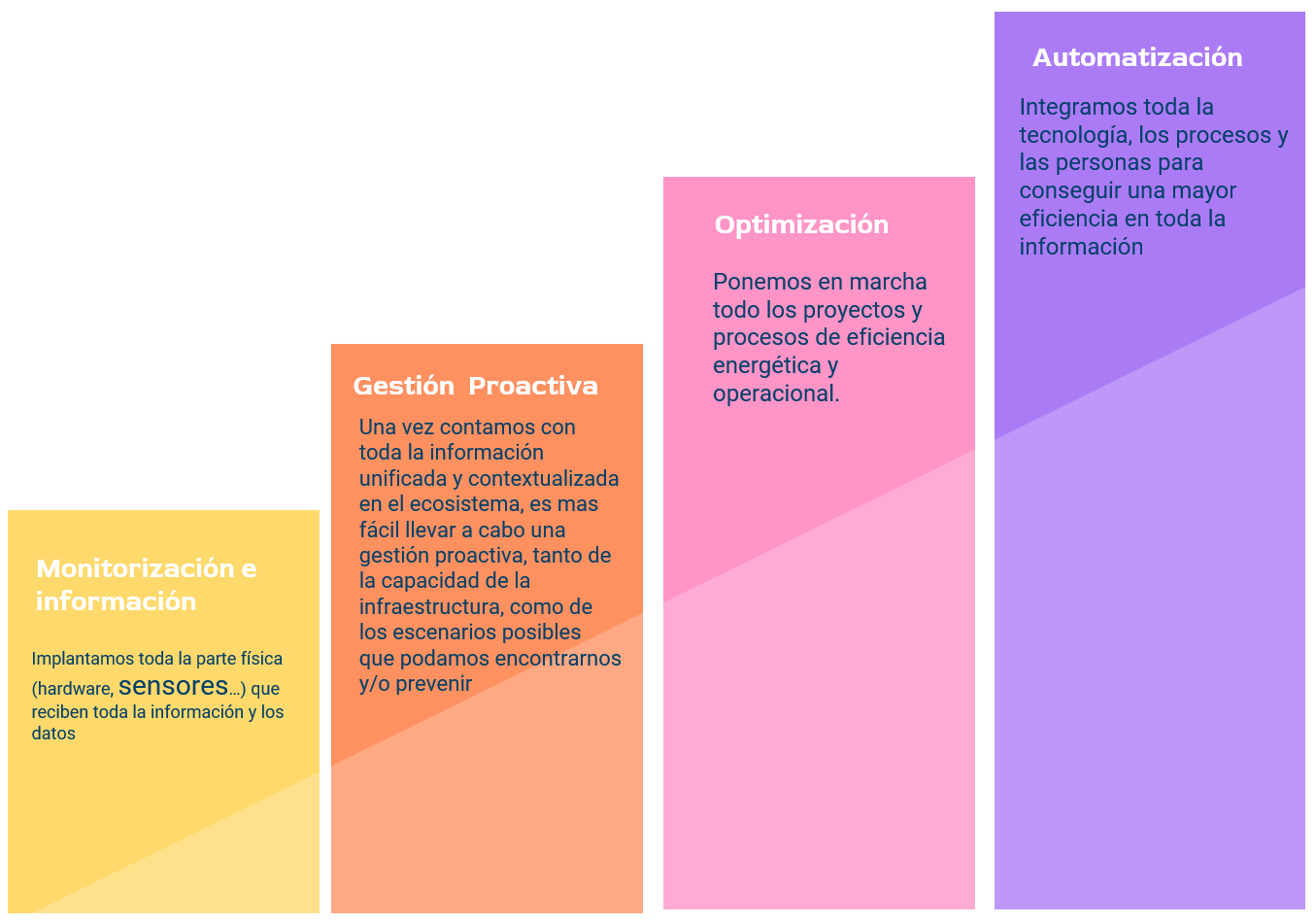
Starting with the monitoring phase, which is the foundation and a critical point on the path to automation, from the initial results, what we observe is that the level of monitoring is directly related to the Data Center's business purpose.
In our view, we consider this to be a point of study because all centers that want to be sustainable and profitable in the short term should have a significant portion of their infrastructure monitored, providing valuable data to the companies.

It is very positive to note that 64% of the respondents have more than 60% of their infrastructure already monitored. However, that same 64% of respondents do not directly control what happens in the remaining 40% of their infrastructure.
SWhile it is true that monitoring legacy infrastructure can sometimes be challenging, with the available technologies, it is possible to make almost the entire infrastructure monitorable with non-invasive technology.
Assuming that, in principle, everyone would agree that more data leads to greater efficiency, it is logical to increase the level of monitoring in technical rooms so that this information can be used to optimize and operate more efficiently.
When focusing on the second phase, proactivity, we can measure it through various questions: those that indicate the number of information sources and how they are handled, as well as a critical aspect for data centers, such as maintenance, and whether the focus is on corrective or preventive measures.
Regarding preventive and corrective maintenance, we observe that customers are primarily focused on preventive maintenance to avoid unexpected incidents. However, the percentage drops significantly when we inquire about whether these maintenance activities are automated.
To achieve this automation, the first step is to have relational information about the system, which means understanding which service may be affected by scheduled or preventive maintenance.
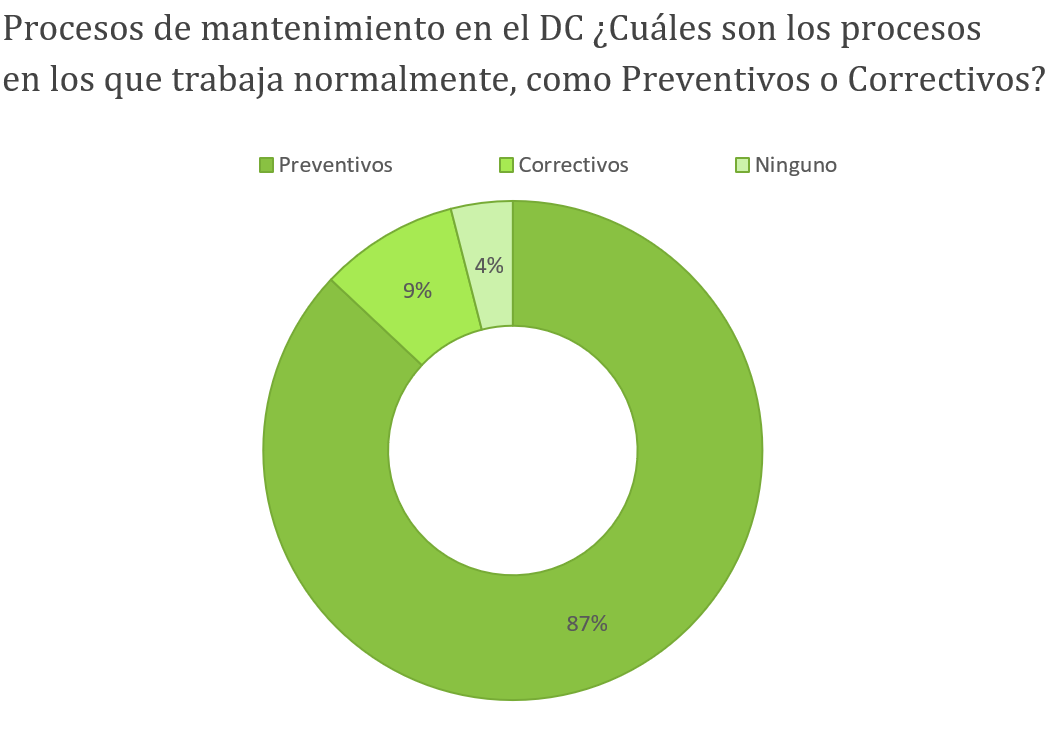

When conducting a cross-analysis of the responses, a clear relationship is reflected between those who report not having automated processes and the number of manual data sources. This is logical because, without the unification of information and automation in data updates, it is impossible to automate preventive maintenance that can generate a report on potential impacts. .
As mentioned earlier, the ability to take proactive action is based on the ability to have a holistic view of the ecosystem. This means managing data center elements while considering the relationships between them. For example, understanding the relationship between a server and the rack PDU that powers it. This relational information is what allows for activity planning and impact assessment.
To determine the existence of related data, we will use the number of existing sources in the respondents' data centers as an indicator:
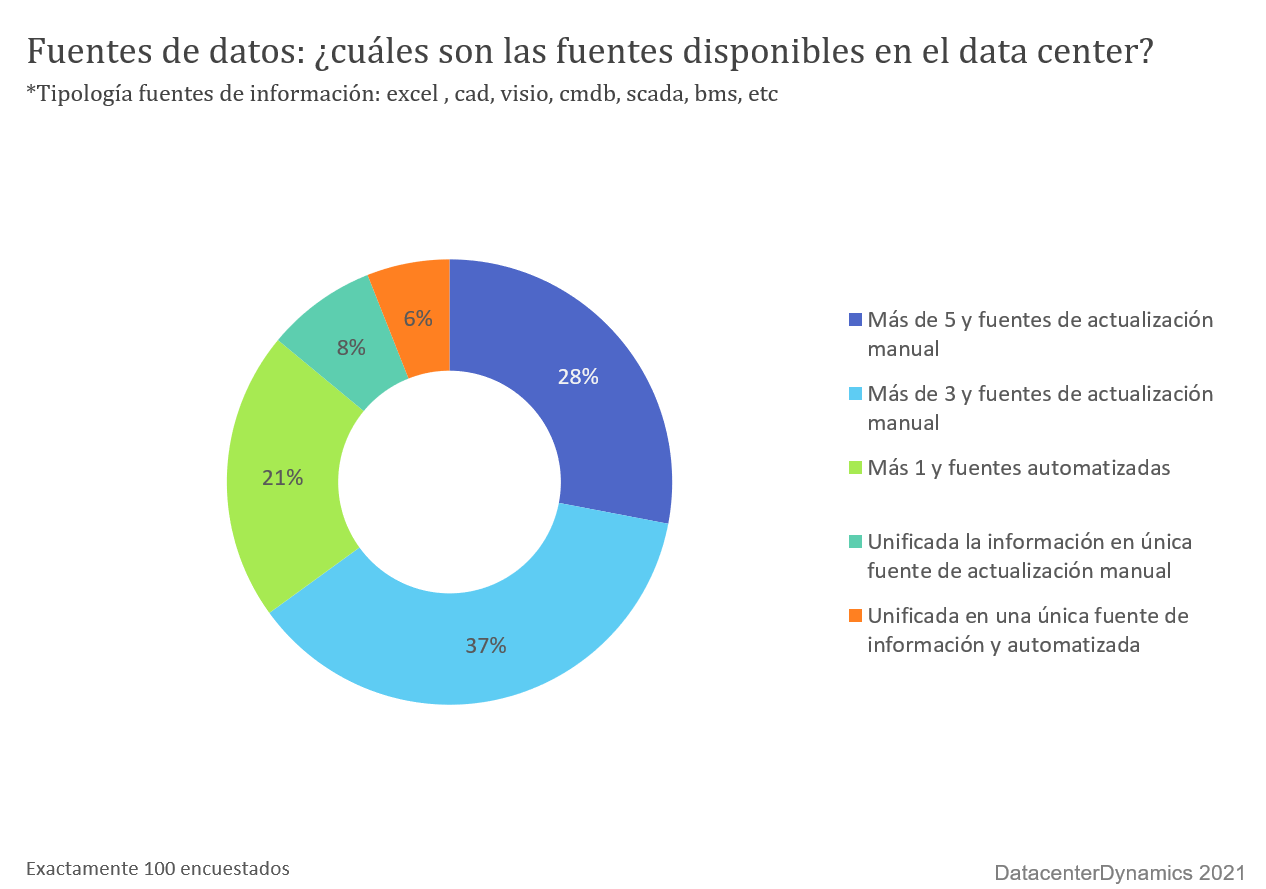
Regardless of whether we could discuss the need for automation in data updates following changes, what we believe is not up for debate today is the benefit of unifying data sources. We understand that the ultimate goal of a data center is the delivery of the service hosted there, and in our view, the effectiveness in achieving this goal lies in having a workflow process that involves various actors. This process should utilize relational information to plan and execute work as part of a known process, with assigned and controlled actions, and it should use a unified source of information regarding elements and their interrelationships to determine the expected result in advance.
It would be hard to comprehend that, for the same goal or service, the actors involved in the entire chain do not have access to relational information about the entire process. Under our perspective, a data center is a collection of elements and processes with a common goal: the delivery of the service.
That's why, at Bjumper, we work hard to maximize the unification of these data sources, which will provide us with a holistic view of the data center. We are convinced that automation in data updates will provide greater data reliability and confidence in decision-making, allowing us to be proactive in our daily operations.
On the other hand, the number of data sources at our disposal affects the time it takes to implement a service. With a greater number of data sources, it's possible that verification tasks will emerge between these sources. Additionally, more people are likely to be involved in the work, leading to longer service delivery times.
In our experience, when there are multiple data sources, they are typically managed by different departments or teams, and their updates are not coordinated, leading to reduced reliability. This lack of coordination can result in operational issues in daily operations.
Moving to the third level, which is optimization (assuming that we start from the point where unified information is available in its context and the goal is to initiate plans for operational and energy efficiency), we asked a direct question about how often specific optimization actions are taken to improve operational and/or energy efficiency in the data center, providing examples of such actions.
A significant percentage, 40%, engages in optimization more regularly. To delve a bit deeper, we cross-referenced these responses with data from companies indicating that they have a Data Center Infrastructure Management (DCIM) solution installed. We observed a direct correlation between the two, with companies using DCIM solutions performing optimization more frequently. Naturally, those companies that chose to transition to an infrastructure management model based on DCIM initiated the process by unifying data to provide context to the information. This unification directly enabled them to conduct efficiency processes.
This is where we believe the future of data center operation lies: an ecosystem that must be in a state of constant optimization, where daily changes are operationally efficient, and data allows us to perform ongoing optimization. A data center is a dynamic system that should always be in balance to minimize the risk of downtime and utilize capabilities appropriately at any given moment. Capacity, time, and service requirements must be integrated.
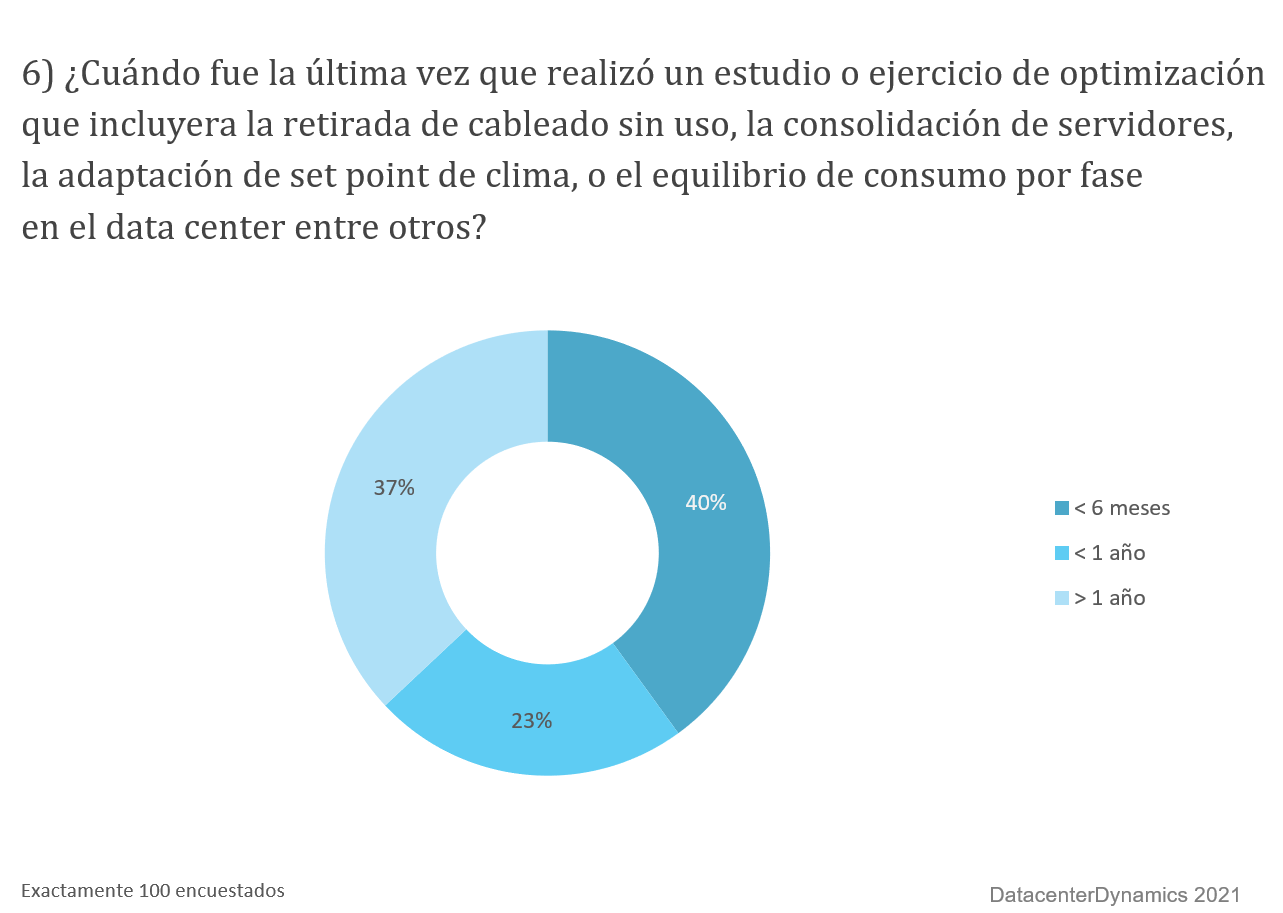
And finally, we have the automation phase. The goal of the survey is to understand where we are as a market and, on an individual level, where each participant stands.
Automation, as a concept, means: "from ancient Greek auto, 'self-guided,' is a system in which production tasks, traditionally performed by human operators, are transferred to a set of technological elements." Success is achieved only with a proper definition of processes that can be facilitated by technology and with qualified and trained personnel to execute these processes through the appropriate use of this technology.
The survey includes indicators that show whether processes are defined and whether they are being carried out in an automated manner. The study reveals very interesting information for all. It shows that for different processes that make up data center operations (such as Move, Add & Change (MAC) processes, contingency plans, optimization, and maintenance), the majority of them are defined. This indicates that process documentation is generally considered a critical tool, and, as a result, it is usually followed. .
However, when it comes to automation, a smaller percentage is currently automated compared to manual document management. At Bjumper, we believe and observe in our daily work that there is a solid foundation to build upon, and we are confident that with consistent investment, we can move to the next level: automation. We are getting close and can reach it in a short time.
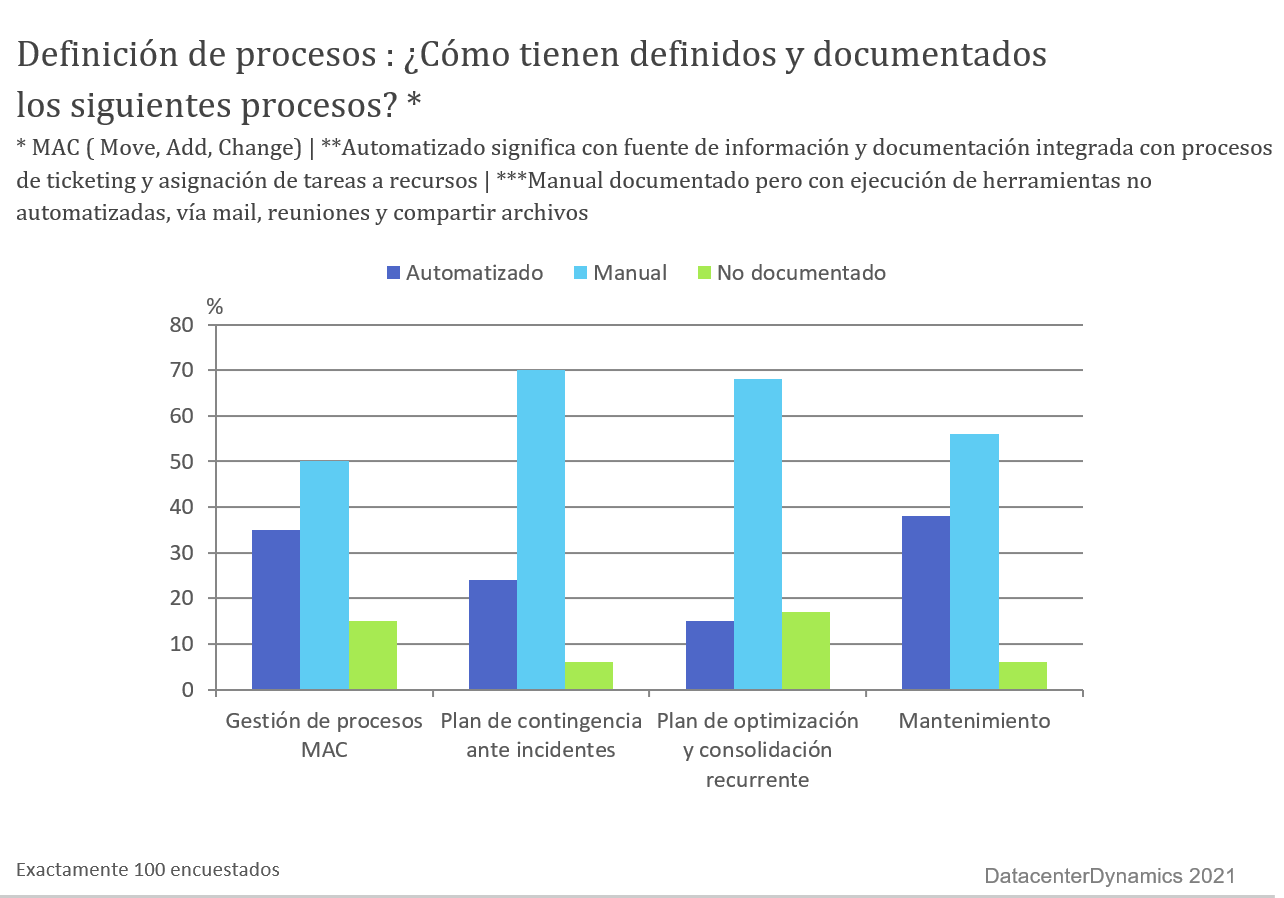
We mentioned that how we define processes is the first indicator, although the ultimate goal of automation is, of course, to improve service levels and minimize downtime risks. However, this is not possible without data analytics, which allows us to provide appropriate responses to needs and anticipate changes in our ecosystem in the short and medium term.
Once we have completed the previous steps, we will have the data granularity available to actively listen to what is, in many cases, our core business today—the data center. This is why we included the following question about what information we can obtain automatically.
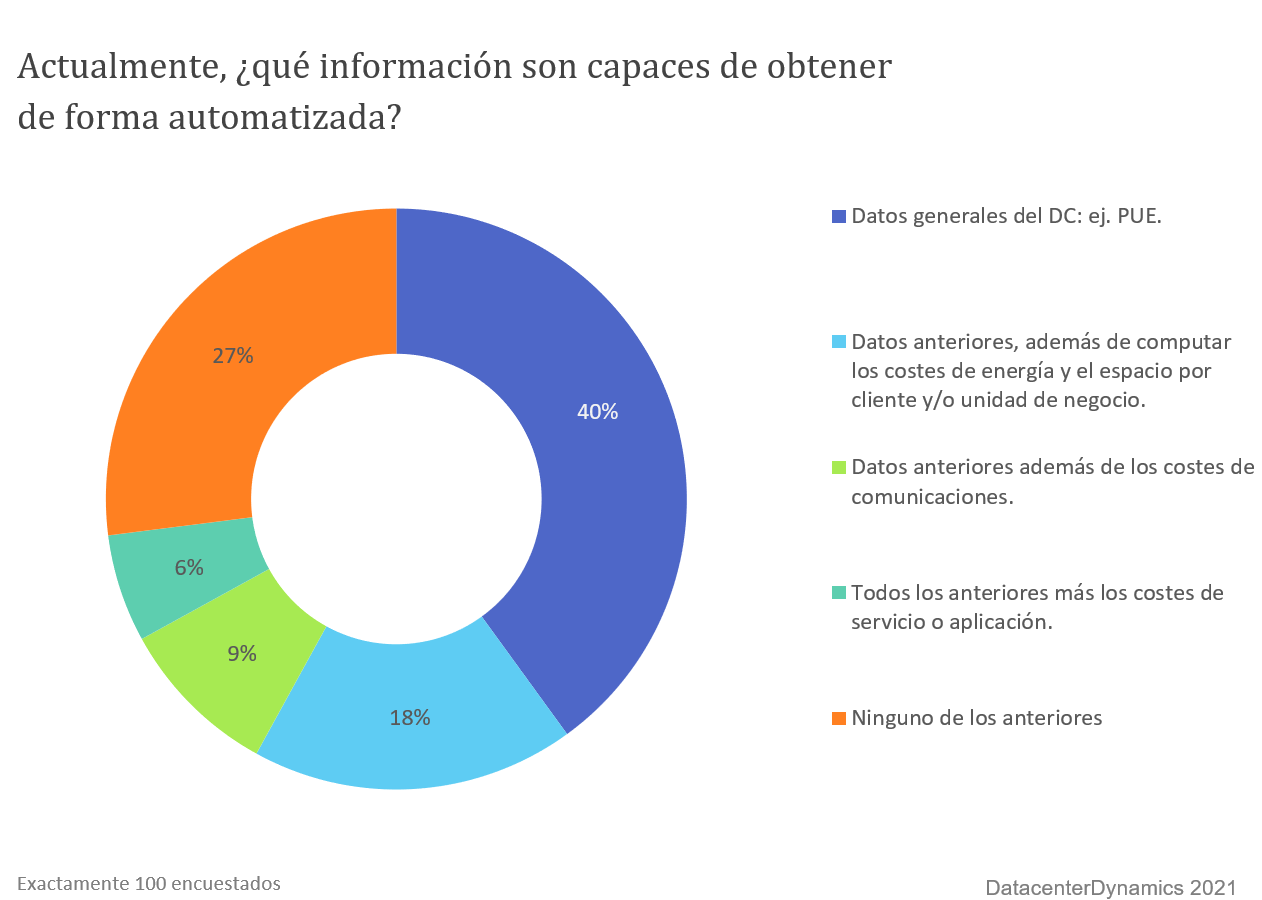
These responses sadly do not align with our expectations after analyzing the previous questions. We have 67% of respondents who, at best, can approach a general value of the data center without delving into business analytics. This is likely where the major challenge for the coming years lies because, in most cases, we have the data at our fingertips. We just need to understand what the appropriate KPIs are for each of us and the best way to have them available in real-time for decision-making.
While we at Bjumper don't believe in magic formulas, we are strong proponents of the DCIM concept as a management model because, as a model, it will help us go through the phases mentioned earlier.
Fortunately, what we have observed is that companies confirming that they have implemented a DCIM are those with shorter MAC (Move, Add & Change) process times and are more efficient in their daily operations. Additionally, in terms of information, they have greater granularity in the available KPIs.
As data enthusiasts, we wanted to include a self-analysis question that also allows us to track the exciting years that await us in the data center sector. Identifying the phase we are in and where we want to be in two years, with the goal of being able to conduct the survey again in two years to assess the evolution of critical infrastructure management.
If we look at the image:
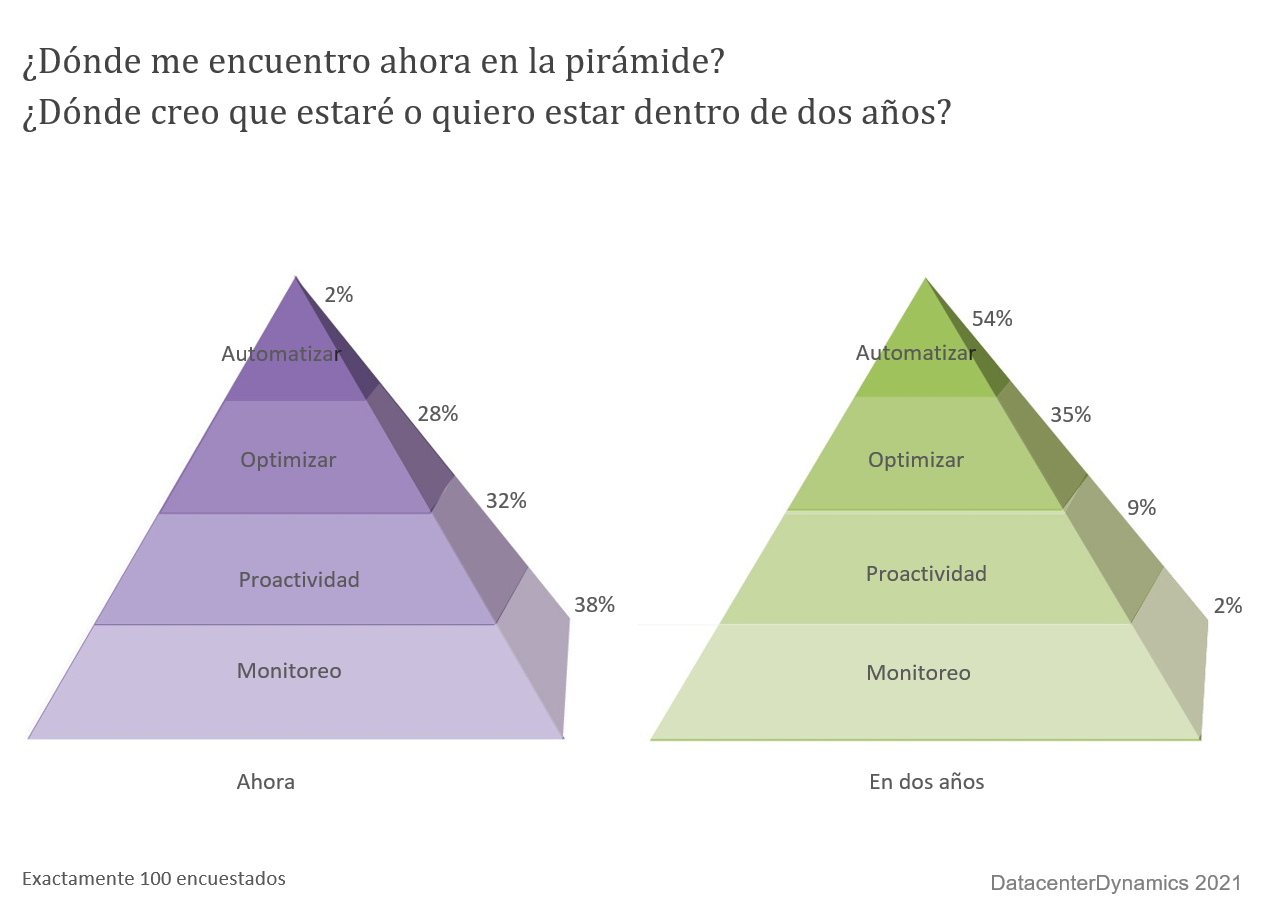
There is a clear consensus: the path is automation, and it's not a one-stop journey. We need to undertake this journey based on our starting point and establish the time frame to reach our destination, taking into account both economic and human resources. It's a matter of multiple factors to consider, and neither the objectives are the same nor the solutions should be standardized for all companies, but there is always a path to improvement. Bjumper is precisely where we like and feel comfortable participating in this journey.
Over the past years, significant investments have been made in more efficient designs and constructions. Now it's time to give greater importance to operations because this is where we can be more efficient in delivering the service.
The industry, which is undoubtedly preparing itself, has a clear awareness that technology offers viable and affordable alternatives. Therefore, we have the path to establish short and medium-term improvement goals, from extending monitoring to automation.
The adoption of technological tools such as DCiM stands out as an objective to take a step forward in modernizing the industry.
We advocate for understanding the investment in data center automation as a strategic plan within companies, supported by leadership. Infrastructure and its management should be made visible, not seen as an expense, but rather as a value to the companies.
We would like to thank all the survey participants for sharing their experiences and for making this market a more open and participatory environment. As a community, we understand how to collaborate to become better and more efficient.

Let Bjumper work for you!